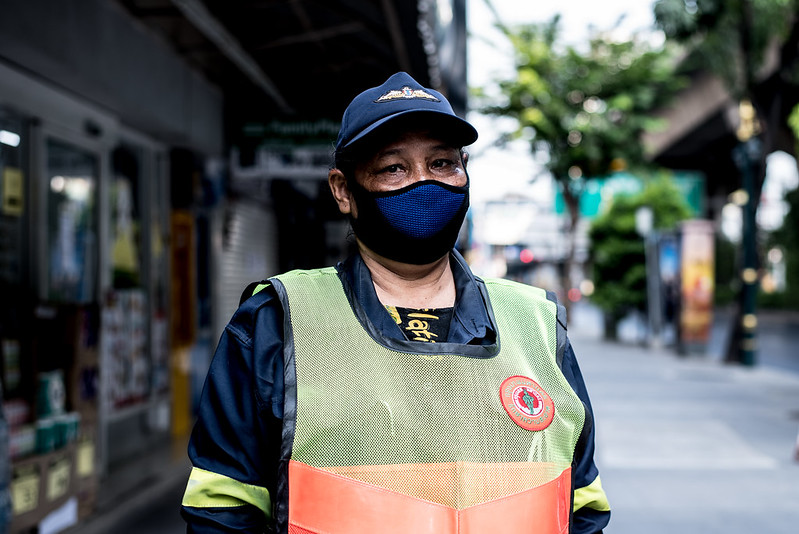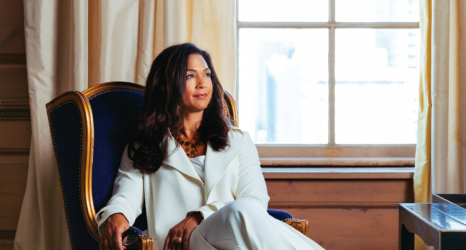
“The reason behind America’s decision to let so many people keep sinking is because the people who are sinking are often Black and Brown,” Eduardo Porter, the author of American Poison, writes recently. “And that when white America—the part of America that has the most political power—has been asked to show empathy across racial lines, it has usually refused.”
Black and Brown bodies are seen as lesser by many in America.
They claim overtly and covertly through lack of action that there isn’t much worth to our lives—even at a time when protecting them would be beneficial to not spreading a contagious disease we are still scrambling to learn how to defeat.
The honest attempt of Black men to protect themselves from the potential spread of COVID-19 leads to racial profiling—while wearing the cloth masks recommended by none other than the Center for Disease Control. These Black men are protected, yet simultaneously unsafe from preconceived prejudices.
As the numbers of infected people with COVID-19 in the United States continue to grow, there is growing recognition regarding the disparities and biases minorities are facing in the midst of this pandemic.

Republican Maryland Governor Larry Hogan reported that the disparity of cases in his state disproprtionately affecting African Americans is “very disturbing.”
Director of Tulane University’s Master’s of Public Health Program Dr. Susan Hassig told Fox News:
“The experience that the African-American community is having with COVID-19, not just in New Orleans but in Chicago and in Detroit, is really placing a spotlight on the fact that access to health care and particularly access to preventative health care, helping individuals who have hypertension to keep it under control, helping people to avoid diabetes or if they have diabetes, to keep it under control.”
As a Black woman in America, I’ve learned that it’s difficult simply to exist in spaces that weren’t designed for my complexion or personality. This is commonplace among my minority friends and a sacred bond that we share together.
Frequently in professional settings, I concede in allowing white people to address me by a shortened version of my legal name. At times, Sabrina suffices in place of my ethnic name they can’t bother to pronounce.
Each day is a new fight for fair treatment for minorities in America and in the midst of COVID-19, the fight has reached a full-out battle.
I acknowledge my privilege as a Black woman in an essential career field serving an underserved community in a major city. My job provides me with health insurance, the ability to work from home; at this time, I’m still getting paid.
This doesn’t ring true for the community I serve or a vast majority of other minorities. Sheltering in place during this crisis is not an option when bills have to be paid and food needs to be on the table. Only 16 percent of Hispanic workers and 20 percent of Black workers can telework.
My younger sister, a single mother of four, works for a daycare and her job is considered essential. This translates to her having to take her four children—ranging from nine years old to seven months—with her to work every day in order to care for the children of other families in dire need of childcare.
At the end of the day, she and her children return to a home she shares with my mother who is considered high riskL: 64 years of age with a pacemaker. The risk of exposure is incredibly high with no assurances that testing will be readily available for any of them.
Communities of color are often overlooked and face inadequacies when it comes to health insurance and access to medical facilities. There is a general distrust from minorities in the American public healthcare system and the level of care it provides to families.
Compared to white people, research shows Black and Brown people are less likely to receive adequate levels of care from providers.
Chicago Mayor Lori Lightfoot said in a CBS interview:
“The kind of things that we’ve been talking about for a long time, that plague Black Chicago, that lead to life expectancy gaps, this virus attacks those underlying conditions with a vengeance.”
The notion that this presumption would change in the midst of a crisis is absurd. Communities of color do not magically have the accessibility when it is most needed to care for themselves and their loved ones.
The New York Times reports:
“The coronavirus is infecting and killing Black people in the United States at disproportionately high rates, according to data released by several states and big cities, highlighting that public health researchers say are entrenched inequalities in resources, health and access to care.”
What makes this statement terrifying in the midst of this global pandemic is that you cannot easily find any substantial data in regards to race and ethnicity. There are no definite measures to accurately track if communities of color are being monitored to possibly prevent the spread of COVID-19.
COVID-19 is deadly. We know this. We see and hear the implications the virus is creating.
Even as we are inundated with information regarding how to best protect ourselves, the most vulnerable communities are being overlooked and dying from it.
Few want to face the possible truth and be accountable that the cases of coronavirus might be rapidly spreading through communities of colors at the most alarming rates.
The Black community is responding—activists are setting up town halls, national networks are hosting informative specials and organizations are rallying to educate those at highest risk.
But not everyone is responding to what is needed.
Race is a sensitive issue for many; the data is not easy to find. But it is there. For example, in Louisiana, Black Americans make up 33 percent of the population and are currently accounting for 70 percent of the coronavirus deaths.
All 12 deaths in St. Louis from COVID-19 were Black people.
Minorities deserve the right to be valued and alerted that this is a disease that is detrimental to their communities. Studies regarding communities at highest risk must be readily available in Spanish to disseminate to residents. Talking points should be developed on how the higher rates of pre-existing health conditions are contributing to Black communities being hit harder by COVID-19.
Everyone must recognize that communities of color are frequently underemployed, underinsured, and at a much higher risk with underlying conditions. These communities deserve the support and resources to ensure that they can indeed contribute to flattening the curve.
The coronavirus pandemic and the response by federal, state and local authorities is fast-moving. During this time, Ms. is keeping a focus on aspects of the crisis—especially as it impacts women and their families—often not reported by mainstream media. If you found this article helpful, please consider supporting our independent reporting and truth-telling for as little as $5 per month.





